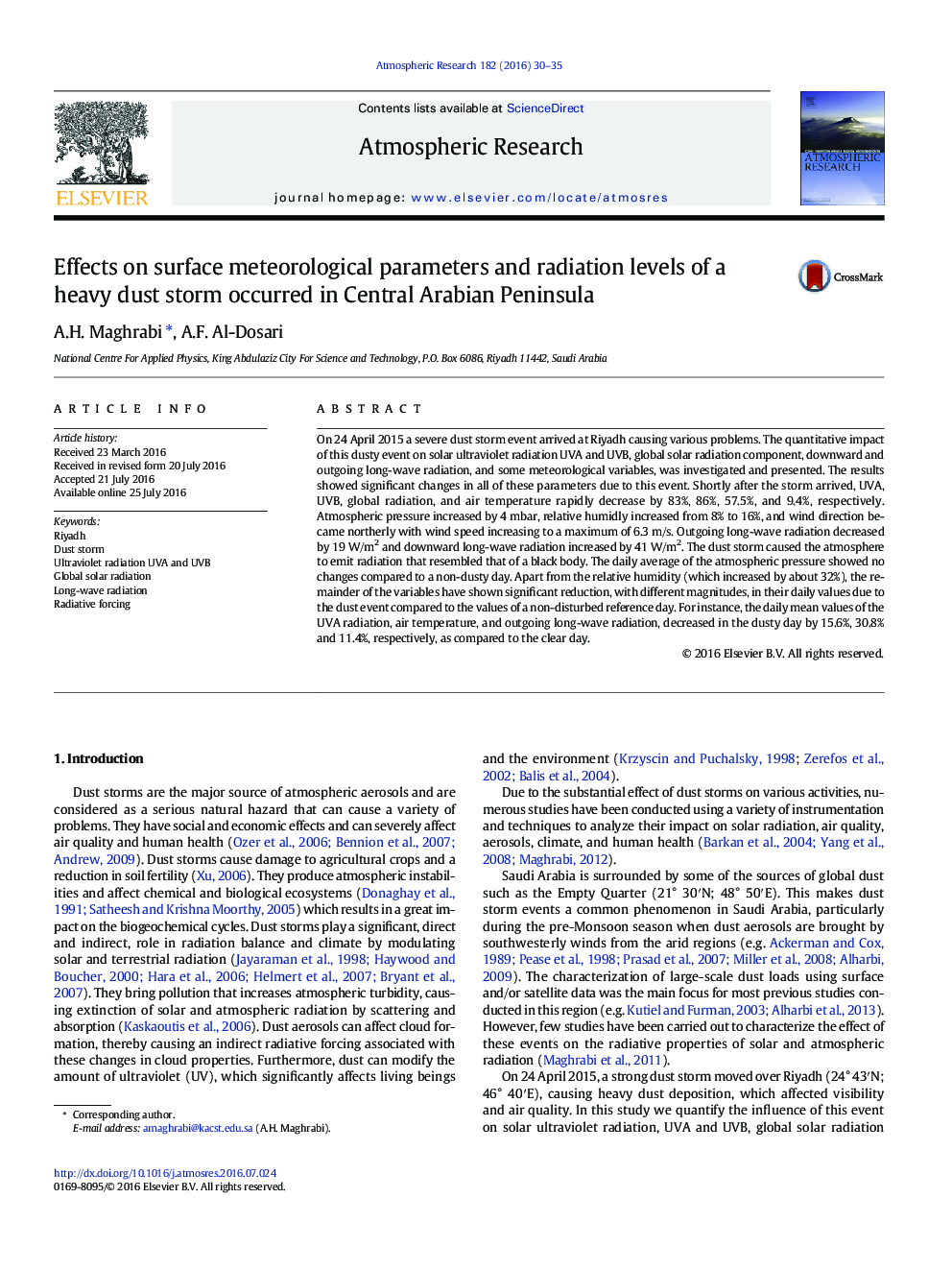| Article ID | Journal | Published Year | Pages | File Type |
|---|---|---|---|---|
| 6342838 | Atmospheric Research | 2016 | 6 Pages |
Abstract
On 24 April 2015 a severe dust storm event arrived at Riyadh causing various problems. The quantitative impact of this dusty event on solar ultraviolet radiation UVA and UVB, global solar radiation component, downward and outgoing long-wave radiation, and some meteorological variables, was investigated and presented. The results showed significant changes in all of these parameters due to this event. Shortly after the storm arrived, UVA, UVB, global radiation, and air temperature rapidly decrease by 83%, 86%, 57.5%, and 9.4%, respectively. Atmospheric pressure increased by 4Â mbar, relative humidly increased from 8% to 16%, and wind direction became northerly with wind speed increasing to a maximum of 6.3Â m/s. Outgoing long-wave radiation decreased by 19Â W/m2 and downward long-wave radiation increased by 41Â W/m2. The dust storm caused the atmosphere to emit radiation that resembled that of a black body. The daily average of the atmospheric pressure showed no changes compared to a non-dusty day. Apart from the relative humidity (which increased by about 32%), the remainder of the variables have shown significant reduction, with different magnitudes, in their daily values due to the dust event compared to the values of a non-disturbed reference day. For instance, the daily mean values of the UVA radiation, air temperature, and outgoing long-wave radiation, decreased in the dusty day by 15.6%, 30.8% and 11.4%, respectively, as compared to the clear day.
Related Topics
Physical Sciences and Engineering
Earth and Planetary Sciences
Atmospheric Science
Authors
A.H. Maghrabi, A.F. Al-Dosari,
